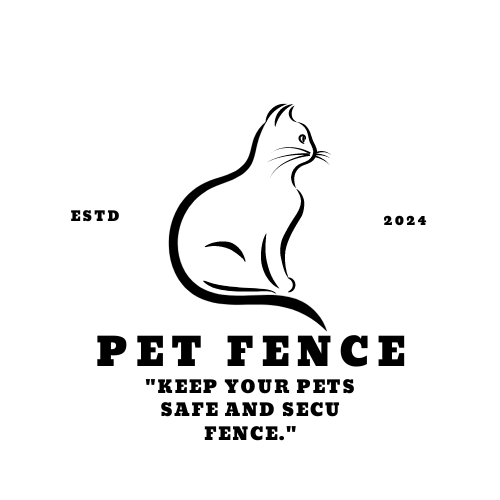DIY Pet Fence Installation: A Comprehensive GuideCreating a safe outdoor space for your pet is essential for their well-being, and installing a pet fence is one of the best ways to achieve this. Whether you’re considering a traditional wooden fence, a chain link option, or an invisible fence system, this guide will walk you through the DIY installation process, offering tips to ensure a successful project.
Why Install a Pet Fence?
Before diving into installation, let’s discuss why a pet fence is a worthwhile investment:
- Safety: Protects your pet from traffic, wild animals, and other dangers.
- Freedom: Allows your pet to roam and play freely in your yard.
- Peace of Mind: Reduces the risk of your pet escaping and getting lost.

Choosing the Right Type of Fence
The first step in your DIY project is selecting the right type of fence.
1. Wooden Fences
- Pros: Durable, aesthetically pleasing, and customizable to your desired height and style.
- Cons: Can be more expensive and requires regular maintenance, such as staining or painting.
2. Chain Link Fences
- Pros: Cost-effective, durable, and relatively easy to install.
- Cons: Less privacy and may not contain small or energetic pets.
3. Vinyl Fences
- Pros: Low maintenance, available in various styles, and resistant to fading and weather.
- Cons: Higher upfront cost compared to other materials.
4. Invisible Fences
- Pros: Unobtrusive, effective for training pets, and flexible in terms of layout.
- Cons: Requires training and may not prevent all escape attempts.
Consider your budget, your pet’s behavior, and your property’s aesthetic when making your choice.
Planning Your Fence Layout
Measure Your Yard
DIY Pet Fence Installation: A Comprehensive GuideAccurate measurements are crucial. Use a tape measure to determine the length and width of the area you want to enclose. Be sure to consider any landscaping, trees, or other obstacles.
Mark the Corners
Using stakes or spray paint, mark the corners of your intended fence layout. This will help visualize the fence’s path and ensure you stay on track during installation.
Check Local Regulations
Some municipalities have restrictions on fence height, materials, and required permits.

Gathering Materials and Tools
Materials Needed
- Fencing Panels (wood, vinyl, or chain link)
- Posts (wood or metal, depending on your fence type)
- Concrete Mix (for securing posts)
- Gates (if required)
- Hardware (screws, hinges, latches, etc.)
Tools Needed
- Post Hole Digger or Auger
- Level
- Tape Measure
- Hammer or Power Drill
- Saw (for cutting wood panels)
- Safety Gear (gloves, goggles)
Step-by-Step Installation Process
Step 1: Digging Post Holes
DIY Pet Fence Installation: A Comprehensive GuideUsing your post hole digger or auger, dig holes for your fence posts. The depth of each hole should be about one-third the height of the post. For example, a 6-foot post should have a hole that is at least 2 feet deep.
Step 2: Setting the Posts
Once your holes are ready, place the posts inside. Ensure each post is level before filling the hole with concrete. A good practice is to use a level to confirm vertical alignment.
Fill the hole with concrete, making sure to leave the top slightly above ground level to prevent water pooling.
Step 3: Attaching the Fence Panels
After the posts are secure, start attaching the fence panels. For wooden and vinyl fences, use screws or nails; for chain link, follow the manufacturer’s instructions.
Ensure each panel is level before securing it to the posts. This step is vital for both aesthetics and functionality.
Step 4: Installing the Gate
If your design includes a gate, carefully follow the installation instructions provided with the gate kit. Make sure the gate swings freely and is aligned correctly. Proper alignment will prevent issues with opening and closing.
Step 5: Finishing Touches
Once the panels are installed, consider adding a top rail for added stability. This is particularly important for wooden fences and DIY Pet Fence Installation: A Comprehensive Guidecan enhance the overall look of your fence.
Inspect the entire fence for gaps or weaknesses. Fill any spaces with dirt or gravel to prevent your pet from digging under the fence.
Maintenance Tips
After installation, regular maintenance is crucial to keeping your fence in good condition:
- Routine Inspections: Periodically check for any signs of wear, loose panels, or damage.
- Cleaning: Remove dirt, leaves, and other debris that may accumulate.
- Prompt Repairs: Address any issues as soon as they arise to ensure your pet remains safe.
Training Your Pet
If you opted for an invisible fence, training your pet to understand the boundaries is essential. Here are some effective training tips:
- Start Gradually: Allow your pet to explore the yard while supervised, gradually introducing the boundaries.
- Positive Reinforcement: Use treats and praise to reward your pet for staying within the designated area.
- Consistent Training: Regularly reinforce the boundaries through training sessions to help your pet understand the limits.
- Training Your Pet
- understand the boundaries is essential. Here are some effective training tips:
- Start Gradually: Allow your pet to explore the yard while supervised, gradually introducing the boundaries.
- Positive Reinforcement: Use treats and praise to reward your pet for staying within the designated area.
- Consistent Training: Regularly reinforce the boundaries through training sessions to help your pet understand the limits.
Conclusion
Installing a pet fence is an excellent DIY project that enhances your pet’s safety and freedom. By carefully planning your layout, selecting the right materials, and following a step-by-step installation process, you can create a secure environment for your furry friend. With proper maintenance and training, your new pet fence will serve you and your pet well for years to come. Happy fencing!

